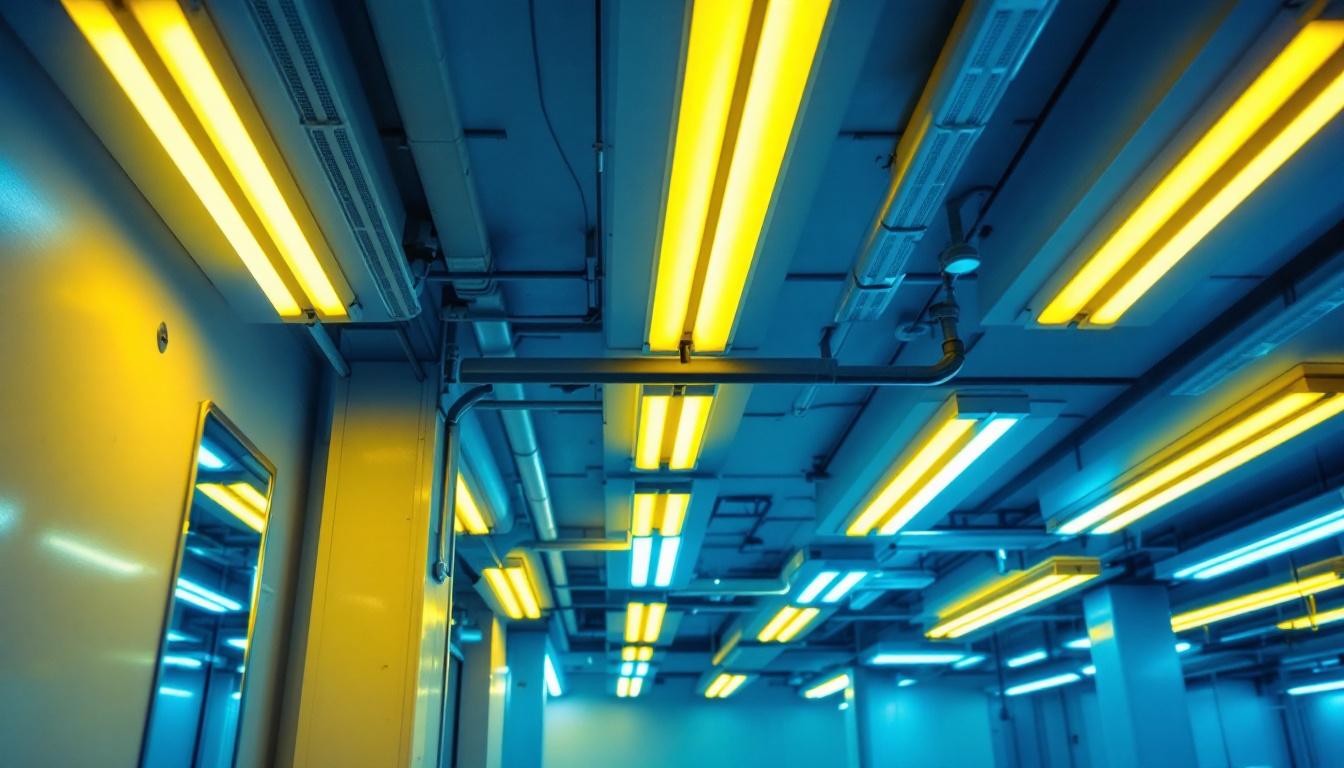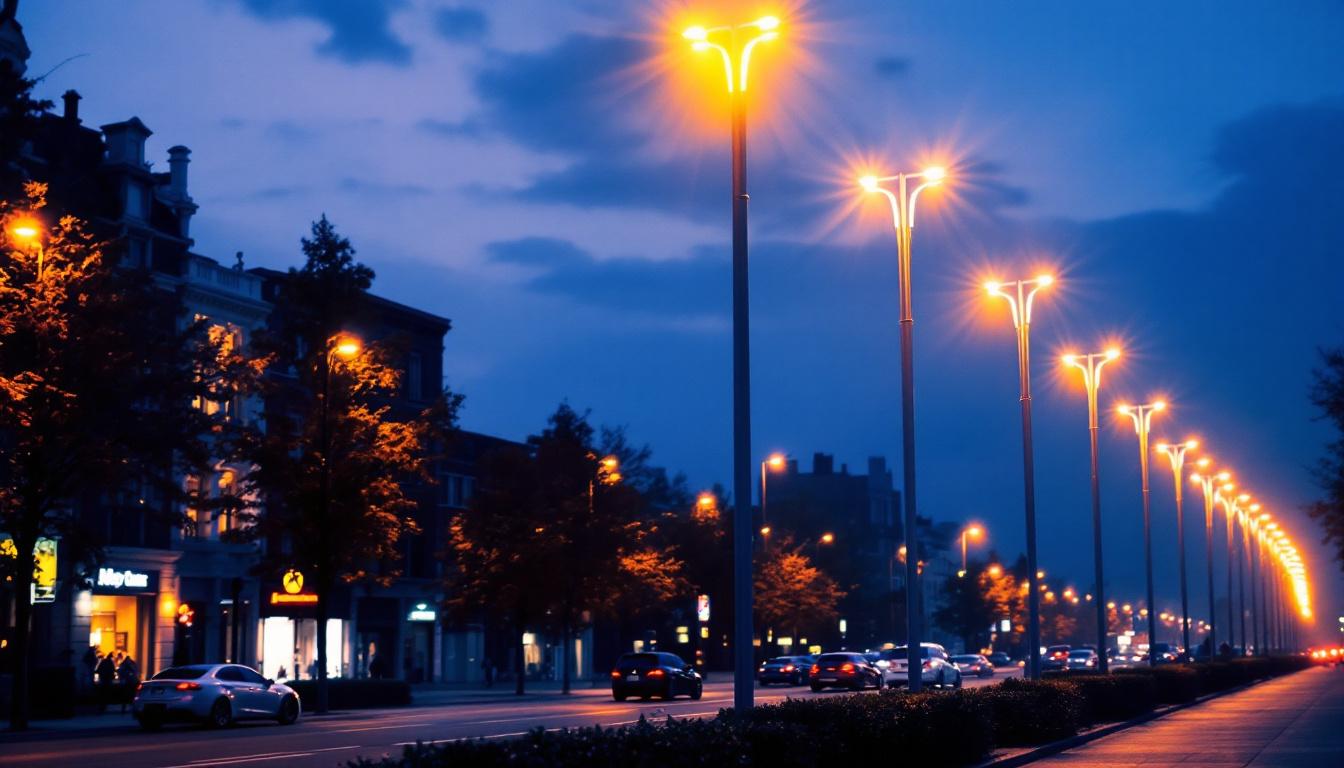
In the realm of lighting installation, the choice of lighting technology can significantly impact both the efficiency of the project and the satisfaction of the end-user. Among the various options available, fluorescent lights stand out for their versatility, energy efficiency, and cost-effectiveness. This article delves into the advantages of fluorescent lighting and how it can enhance lighting installation projects for contractors.
Fluorescent lights operate by passing an electric current through a gas-filled tube, which produces ultraviolet light. This ultraviolet light then excites a phosphor coating on the inside of the tube, emitting visible light. This technology has been a staple in commercial and industrial settings for decades, but its applications extend far beyond these environments. From schools to hospitals, and even in residential settings, fluorescent lighting provides a versatile solution that meets a variety of illumination needs.
Fluorescent lights come in various forms, each suited for different applications. The most common types include:
Understanding these types allows contractors to select the most appropriate fluorescent lighting solution based on the specific needs of a project. Additionally, advancements in technology have led to the development of compact fluorescent lamps (CFLs) that are designed to fit into standard light fixtures, providing the benefits of fluorescent lighting in a more compact form. These CFLs are particularly popular in residential settings, where they can replace incandescent bulbs while still delivering significant energy savings.
One of the primary advantages of fluorescent lights is their energy efficiency. Compared to incandescent bulbs, fluorescent lights consume significantly less energy, leading to lower electricity bills for end-users. This efficiency not only benefits the environment but also enhances the overall value proposition of a lighting installation project. The reduced energy consumption translates into a smaller carbon footprint, making fluorescent lighting a more sustainable choice in today’s eco-conscious market.
Moreover, many fluorescent lights have a longer lifespan than traditional bulbs, which means fewer replacements and maintenance costs over time. This aspect can be particularly appealing to clients looking to minimize operational expenses. In addition to cost savings, the consistent light output of fluorescent fixtures can enhance productivity in work environments, as they provide a bright and even illumination that reduces eye strain. This is especially important in settings such as offices and factories, where adequate lighting is crucial for safety and efficiency.
Fluorescent lights are versatile and can be used in a wide range of applications. From office buildings to retail spaces, their adaptability makes them a preferred choice for many lighting projects.
In commercial settings, fluorescent lights provide bright, even illumination that enhances productivity and creates a welcoming atmosphere. They are commonly used in:
The ability to install fluorescent lights in various configurations—such as recessed, surface-mounted, or suspended—allows contractors to tailor lighting solutions to the specific needs of each space. Additionally, the energy efficiency of fluorescent lighting can lead to significant cost savings over time, making them an economically sound choice for businesses looking to reduce overhead expenses. Many modern fluorescent fixtures are designed to work with advanced controls, such as dimmers and occupancy sensors, further enhancing their functionality and efficiency.
Fluorescent lights are also well-suited for industrial environments. Their durability and high lumen output make them ideal for:
In these settings, the ability to provide consistent lighting can improve safety and efficiency, making fluorescent lights an excellent choice for contractors working in industrial projects. Furthermore, many industrial fluorescent fixtures are designed to withstand harsh conditions, including extreme temperatures and exposure to dust and moisture, which is crucial for maintaining optimal visibility in challenging environments. The long lifespan of fluorescent bulbs also means less frequent replacements, contributing to lower maintenance costs and less downtime in busy industrial operations.
Another significant application of fluorescent lighting is in healthcare facilities. Hospitals and clinics require bright, reliable lighting to ensure that medical professionals can perform their duties effectively. Fluorescent lights are often found in:
The quality of light provided by fluorescent fixtures can enhance the visibility of medical instruments and improve patient comfort. Moreover, the ability to use color-corrected fluorescent bulbs helps to create a more natural light environment, which can be beneficial for both patients and staff. With advancements in technology, some healthcare facilities are now incorporating LED fluorescent hybrids, which offer even greater energy efficiency and longer lifespans, further supporting the sustainability goals of modern healthcare practices.
When undertaking a lighting installation project involving fluorescent lights, several factors must be considered to ensure optimal performance and satisfaction.
Fluorescent lights require a ballast to regulate the current flowing through the lamp. Choosing the right ballast is crucial for the performance and longevity of the lighting system. There are two main types of ballasts:
Contractors should carefully evaluate the project requirements and client preferences when selecting a ballast to ensure the best results.
The design of the fixtures used to house fluorescent lights can also impact the effectiveness of the lighting installation. Factors to consider include:
By selecting the right fixtures, contractors can enhance the performance of fluorescent lighting systems and meet client expectations.
For lighting contractors, incorporating fluorescent lights into projects can yield several benefits, making them a valuable addition to any installation portfolio.
Clients are increasingly looking for energy-efficient solutions that reduce costs and environmental impact. By offering fluorescent lighting options, contractors can meet these demands while providing high-quality lighting that enhances the functionality and aesthetics of a space. Satisfied clients are more likely to return for future projects and recommend services to others.
In a competitive market, staying ahead of the curve is essential. By mastering fluorescent lighting installation techniques and keeping abreast of the latest technologies, contractors can differentiate themselves from competitors. This expertise can lead to increased business opportunities and a stronger reputation in the industry.
Despite the many advantages of fluorescent lighting, contractors may encounter challenges during installation and maintenance. Understanding these challenges and how to address them is crucial for successful project execution.
Flickering lights can be a common issue with fluorescent fixtures, often caused by poor ballast performance or incompatible dimming systems. To mitigate this problem, contractors should:
Color rendering can also be a concern, as some fluorescent lights may not accurately represent colors. Selecting high CRI (Color Rendering Index) fluorescent lamps can help address this issue, ensuring that spaces are lit in a way that accurately reflects colors.
Fluorescent lights contain small amounts of mercury, which poses environmental concerns if not disposed of properly. Contractors should educate clients about proper disposal methods and recycling options to minimize environmental impact. Additionally, promoting the use of energy-efficient fluorescent lights can contribute to sustainability goals.
While LED technology is gaining popularity, fluorescent lighting continues to evolve, offering new opportunities for contractors. Staying informed about industry trends can help contractors remain competitive and meet client needs effectively.
Innovations in fluorescent lighting technology are ongoing, with developments focused on improving efficiency, light quality, and environmental impact. For example, advancements in phosphor technology have led to better color rendering and higher lumen output.
As smart technology becomes more prevalent, integrating fluorescent lighting with smart systems can enhance functionality. Contractors can explore options for smart ballasts and controls that allow for remote management and automation, providing added value to clients.
Fluorescent lights offer a myriad of benefits for lighting installation projects, from energy efficiency to versatile applications. For contractors, understanding the nuances of fluorescent lighting can lead to enhanced client satisfaction, a competitive edge, and successful project outcomes. As the industry continues to evolve, staying informed about advancements and trends will ensure that contractors can leverage the advantages of fluorescent lighting effectively.
Incorporating fluorescent lights into lighting installation projects not only meets the demands of modern clients but also contributes to a more sustainable and efficient future in lighting design. By embracing this technology, contractors can elevate their services and create spaces that are both functional and aesthetically pleasing.
Ready to enhance your lighting installations with the energy-efficient and cost-effective solutions of fluorescent lighting? Look no further than LumenWholesale for all your lighting needs. We provide contractors with the highest quality, spec-grade lighting products at unbeatable wholesale prices. Our extensive selection is designed to meet the most rigorous industry standards, ensuring that you deliver reliable and high-performance lighting to your clients. Plus, with free shipping on bulk orders, you can enjoy premium lighting solutions at the best value — all without hidden fees or compromises. Elevate your lighting projects by choosing LumenWholesale, where quality, affordability, and convenience come together seamlessly. Discover our range and take advantage of the best value in wholesale lighting by visiting LumenWholesale today.

Discover the essential guide to light bulb base sizes with our comprehensive chart tailored for lighting contractors.

Discover the essential checklist for lighting contractors when installing fan light combo switches.

Discover how Noralighting is transforming the lighting industry by maximizing profitability in installations.

Discover how steel light poles can enhance profitability in lighting installations.